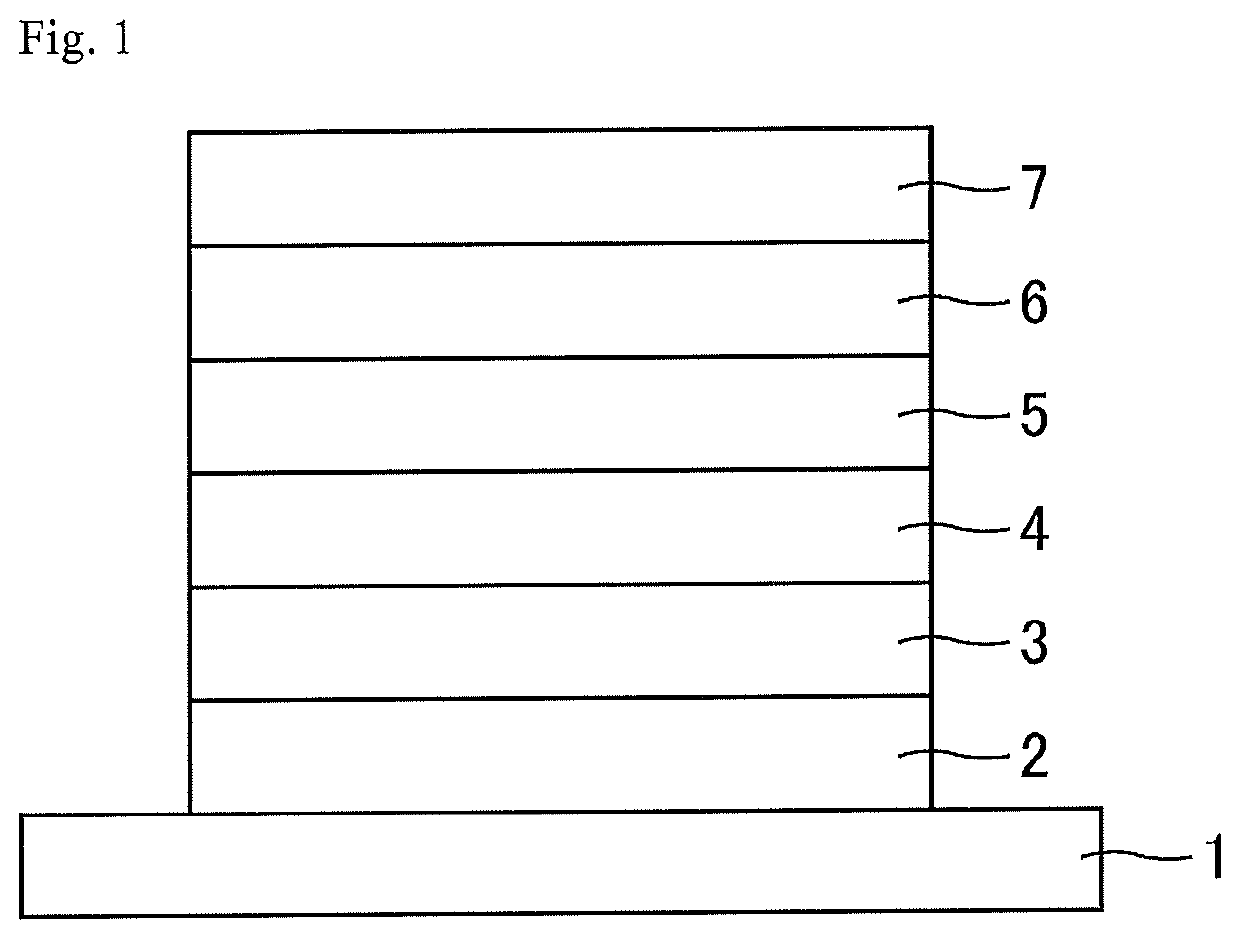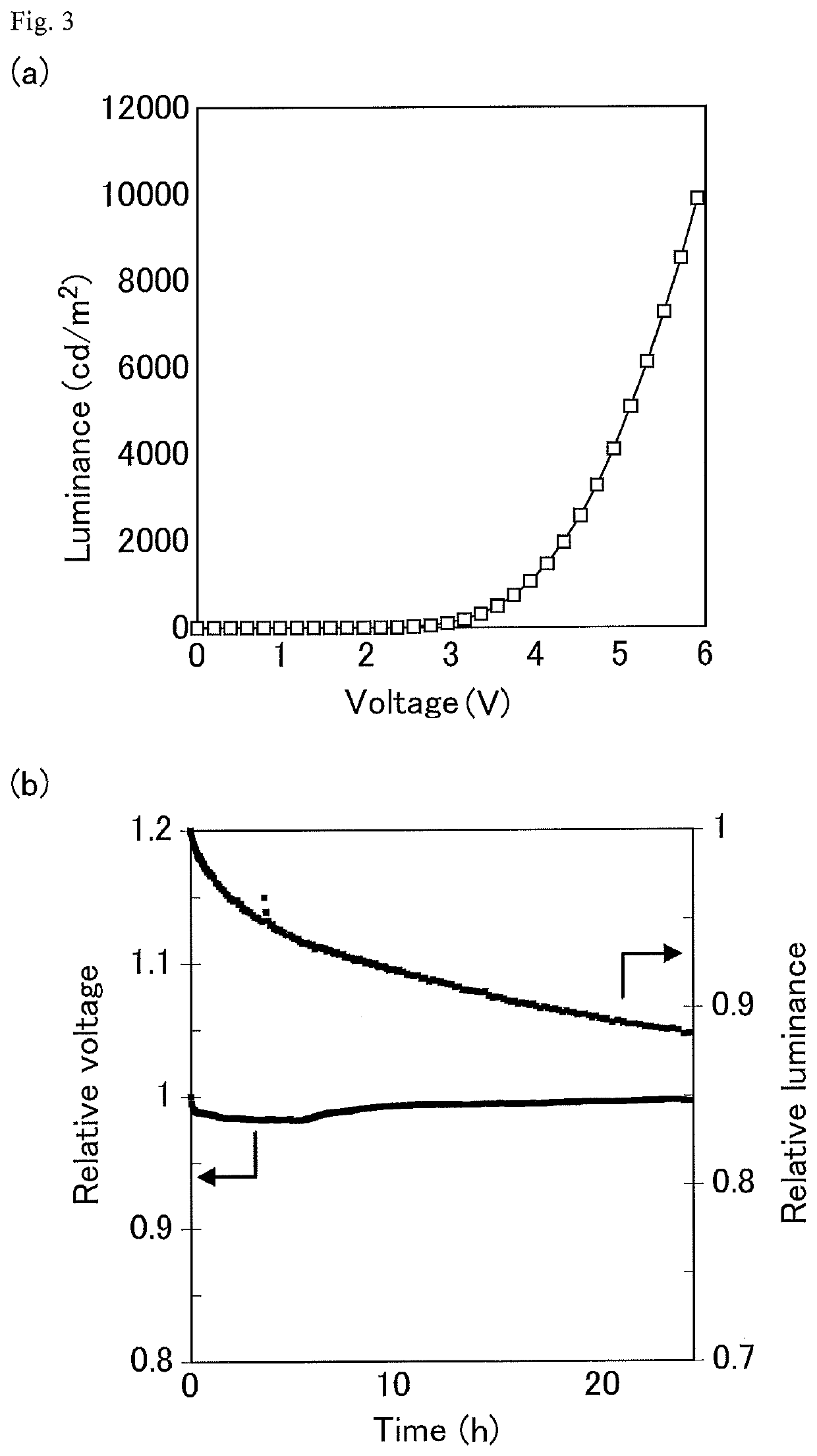Organic electroluminescent element
- Summary
- Abstract
- Description
- Claims
- Application Information
AI Technical Summary
Benefits of technology
Problems solved by technology
Method used
Image
Examples
example 1
[0155][1] A commercially available transparent glass substrate 1 having an average thickness of 0.7 mm with an ITO electrode layer was prepared. The substrate was provided with an ITO electrode 2 patterned to have a width of 2 mm. The substrate was rinsed with ultrapure water, followed by ultrasonic washing in a diluted solution of Clean Ace twice each for 5 minutes. Thereafter, the substrate was ultrasonically washed in ultrapure water twice each for 5 minutes, followed by ultrasonic washing in acetone and isopropanol each for 10 minutes. Then, the substrate was boiled in isopropanol for 5 minutes. The substrate was taken out from isopropanol, dried by nitrogen blow, and washed with UV ozone for 20 minutes.
[0156][2] The substrate was fixed again to a substrate holder of a mirrortron sputtering apparatus having zinc metal targets. The pressure was reduced to about 5×10−5 Pa, and then sputtering was performed while introducing argon and oxygen. Thus, a zinc oxide layer having a thick...
example 2
[0170]An organic electroluminescence device (2) was produced as in Example 1, except that step [7] was changed to the following step [7-2], and the properties thereof were evaluated. The results are shown in FIG. 3.
[0171][7-2] The thin film (substrate) produced in step [6] was annealed on a hot plate at 150° C. for 10 minutes in nitrogen.
example 3
[0172]An organic electroluminescence device (3) was produced as in Example 1, except that step [7] was skipped, and the properties thereof were evaluated. The results are shown in FIG. 4.
PUM
| Property | Measurement | Unit |
|---|---|---|
| Thickness | aaaaa | aaaaa |
| Thickness | aaaaa | aaaaa |
| Molecular weight | aaaaa | aaaaa |
Abstract
Description
Claims
Application Information
 Login to View More
Login to View More - R&D
- Intellectual Property
- Life Sciences
- Materials
- Tech Scout
- Unparalleled Data Quality
- Higher Quality Content
- 60% Fewer Hallucinations
Browse by: Latest US Patents, China's latest patents, Technical Efficacy Thesaurus, Application Domain, Technology Topic, Popular Technical Reports.
© 2025 PatSnap. All rights reserved.Legal|Privacy policy|Modern Slavery Act Transparency Statement|Sitemap|About US| Contact US: help@patsnap.com



